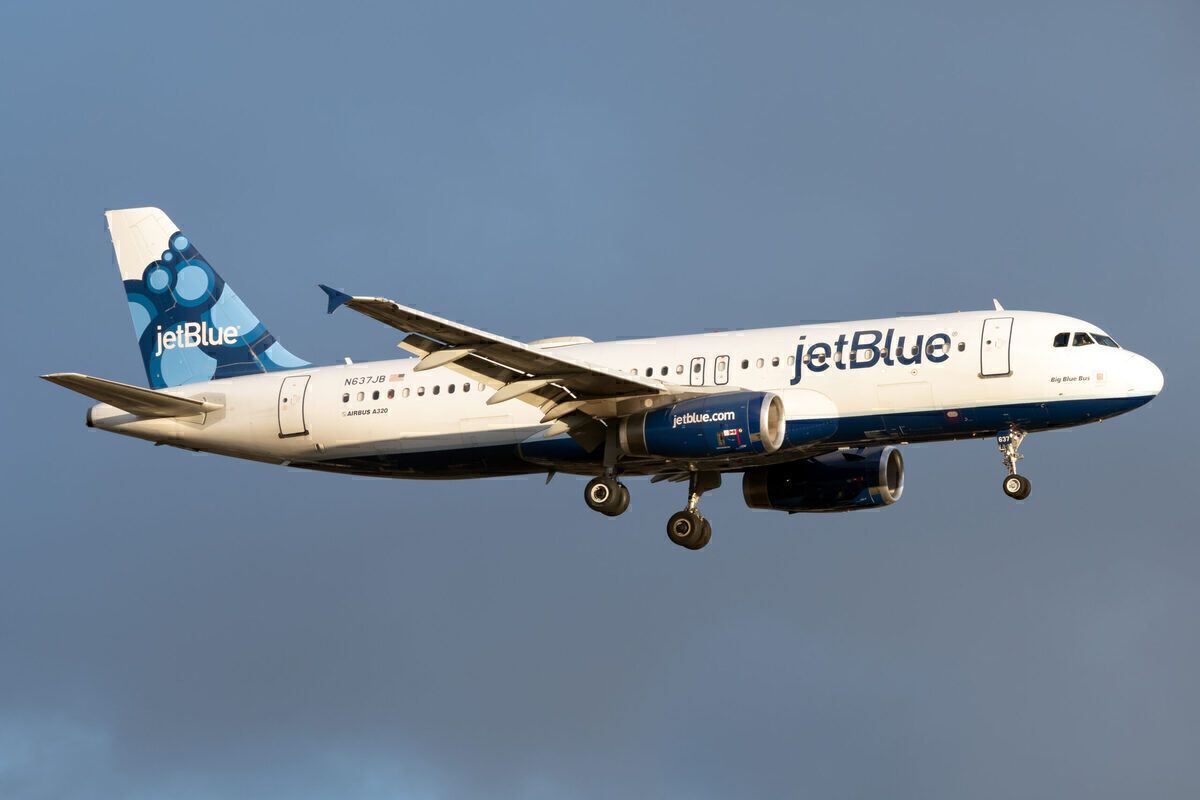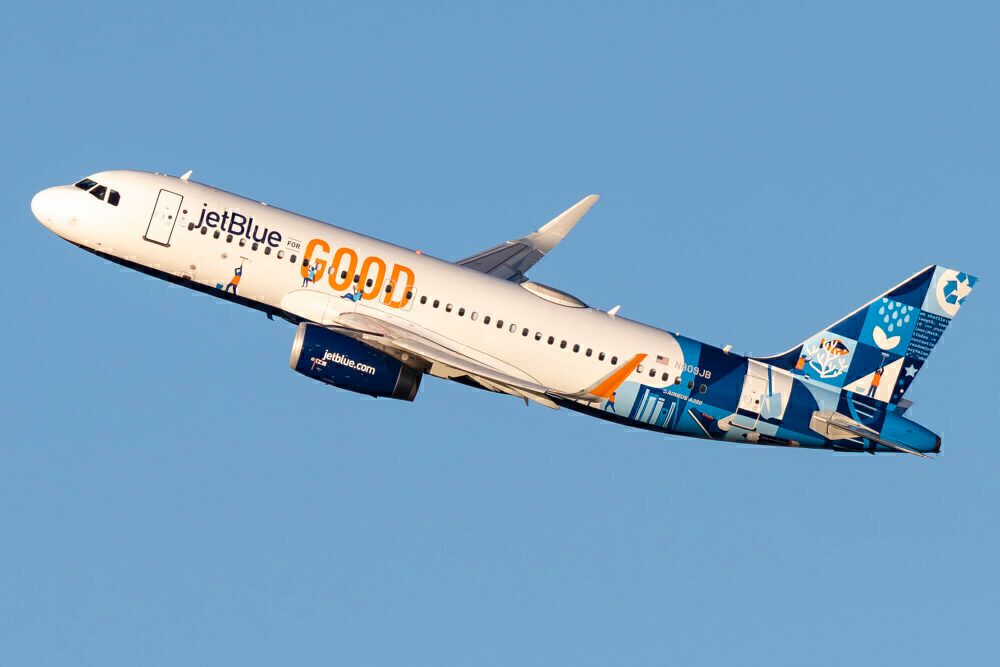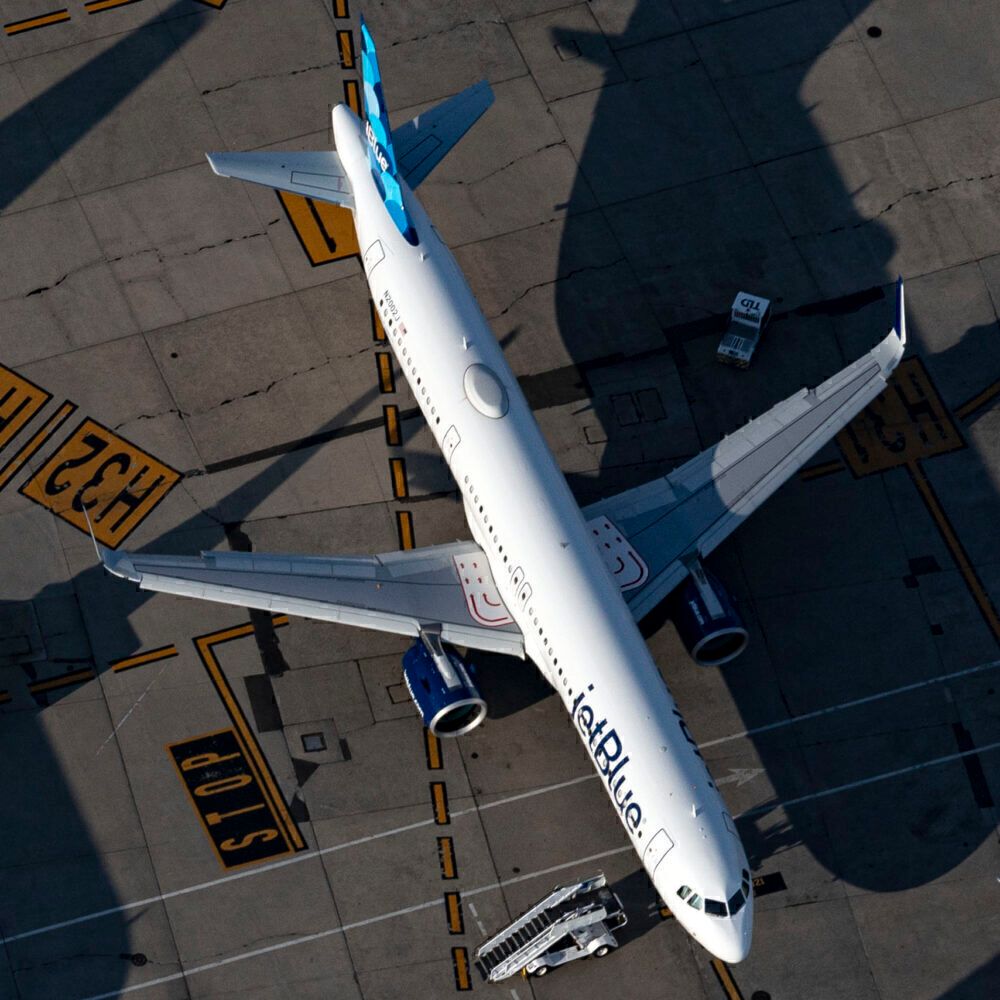Like many airlines, JetBlue had to aggressively manage its capacity in 2020. However, the airline kept in line with its business model and focused its capacity mostly around three market areas, which are typically the airline's most important markets. These are the transcontinental US market, the Caribbean and Latin America, and Florida.
The distribution of JetBlue's capacity in 2020
JetBlue distributed its capacity in the following market areas as a percentage of available seat miles (ASMs):
- Transcontinental: 31.7%
- Caribbean & Latin America: 31.4%
- Florida: 27.4%
- East: 4.5%
- Central: 4.0%
- West: 1.0%
Here's how 2020's capacity distribution compares to 2019 and 2018:
|
Region |
2020 |
2019 |
2018 |
|---|
Note that the percentages are relative to the overall JetBlue network for a given year. In reality, JetBlue's 2020 capacity was down 48.8% year-over-year, and the percentages above represent how much of that 2020 capacity these various markets made up.
As you can see from the above table, capacity distribution was relatively stagnant from year-to-year. Transcontinental retained its top position with the Caribbean and Latin America stagnant. Central US capacity also remained stagnant, while West Coast capacity declined slightly. Eastern US capacity was down 1.5% as a percentage of the network year-over-year.
Stay informed: Sign up for our daily and weekly aviation news digests!
Florida shines bright
As a percentage of the network, Florida grew by 1.2%, which represents the importance of that state to the airline and the US as a whole. Leisure travelers dominate the current travel environment. Few destinations in the US are as conducive to leisure travel as Florida.
As a state, Florida is generally a warm-weather destination with access to beaches and outdoor destinations that passengers flocked to during the summer and winter months in 2020. The state was largely welcoming to tourists, with a few restrictions in place, and it early on emerged as an important destination.
JetBlue's two most important cities in Florida are Fort Lauderdale and Orlando. Fort Lauderdale-Hollywood International Airport (FLL) is one of JetBlue's main bases, and it had a 19% market share, approximately, out of the airport in 2020. In another important city, Orlando International Airport (MCO), JetBlue made up 10% of all seats offered to and from the airport.
JetBlue likes to brand itself as a point-to-point carrier, and it has focused on expanding service to and from other cities in Florida. In 2020, the airline announced new flights to Miami and Key West, among a host of other routes to and from Florida.
Sticking to its fundamentals
JetBlue mostly stuck to its fundamentals in 2020. The airline focused on its point-to-point network, even as some point-to-point carriers retreated somewhat to a hub-and-spoke model and focused on the markets it knows it does well in.
JetBlue has, historically, had a weaker position in the western US compared to other carriers. Moving away from its Long Beach base in favor of Los Angeles International Airport (LAX), JetBlue is hopeful that it can expand its western US presence and grow to over daily departures or more out of Los Angeles.
For JetBlue, sticking to its fundamentals makes sense. JetBlue has flourished with its existing route network, and focusing on its strengths is a good idea for the carrier. While Florida got a boost, JetBlue had always viewed that state as an important part of its route network.
The spaces to watch in the future are the Western US and the Caribbean and Latin America. The second area to watch is how JetBlue's capacity grows in the New York-area, especially as a result of this new American Airlines partnership and JetBlue's expansion plan focused on Newark.
What do you make of JetBlue's 2020 capacity distribution? Let us know in the comments!




